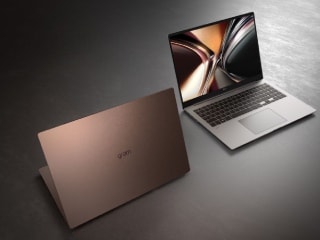- Home
- Others
- Others Features
- Semiautonomous Driving Arrives, Feature by Feature
Semiautonomous Driving Arrives, Feature by Feature

Automakers descended on New York for the city's annual auto show this week with vehicles ready to do more than just respond to drivers' commands. However, the question of whether drivers want their cars to take charge remained unanswered.
The path to fully autonomous driving will still take years to reach consumers, but car manufacturers demonstrated this week that they are now able to offer buyers several levels of so-called active safety features - in which the car takes over driving in certain instances. And they plan to introduce even more advanced semiautonomous capabilities in the coming months.
Tesla Motors made a splash when it recently announced plans to add automated highway driving features, which it calls autopilot, to its Model S sedans by the summer. But such capabilities are coming to a range of vehicles sooner than many realize.
Volvo plans to introduce a version of its XC90 this spring that will essentially provide similar autopilot capabilities at lower speeds. Intended for traffic jams, its "pilot assist" system allows the sport utility vehicle to take over both the steering and throttle to follow the car in front of it at speeds up to about 35 mph.
"We're taking out the part of people's commute that they don't like," said Jim Nichols, a Volvo spokesman. "Even people who normally like to drive have told us they want the autonomous part for the more boring parts of their commute. So we're giving it to them."
Nichols said although the car would take control, Volvo still expected drivers to stay engaged and keep their hands on the wheel.
Audi plans to offer a similar feature in January on its new Q7 sport utility vehicle, which would allow the car to operate itself at up to 40 mph. Drivers will need to touch the wheel every 10 seconds to maintain the autonomous driving, the company said.
(Also See: Nissan Pledges to Launch Self-Driving Cars in Japan by 2016)
"There's not going to be some magical moment when we say, here is the autonomous car," said Scott Keogh, head of Audi's US operations. "We have the technology, and we are going to keep bringing it out, step by step. You need to have customer acceptance and see what consumers are willing to pay for."
Keogh said Audi's current active safety package, which, for $2,550, includes adaptive cruise control, emergency braking and blind-spot detection, was selling well, with about 60 percent of A6 buyers paying for the option.
A number of higher-end automakers at the New York show already offer cars that are capable of correcting themselves in an instance when a driver is drifting out of a lane, and that also have adaptive cruise control, where sensors adjust speed based on the vehicle ahead. The industry is now essentially taking those technologies and merging them, resulting in a vehicle that can drive itself down a highway.
While luxury buyers will see the most advanced capabilities first, the technologies will trickle down to more affordable cars and trucks, auto executives say. A rearview camera, for example, began as a high-end item but has since become almost ubiquitous. The National Highway Traffic Safety Administration has made them mandatory on all new vehicles by 2018.
The safety agency's new administrator, Mark R. Rosekind, has said one of his priorities is to ensure that active safety features that can prevent accidents become available to the mass market, not just luxury buyers, in the coming years.
"Affordability is a key part of this," said Alan S. Batey, president of North American operations for General Motors. "It may start at Cadillac, but when we scale it, that means the costs are reduced to where we'll be able to bring it down through our range of vehicles."
Cadillac, in fact, plans to offer what it calls Super Cruise next year in its 2017 CT6 sedan, which was unveiled on Tuesday. The feature will allow for hands-off-the-wheel, feet-off-the-pedals highway driving.
(Also See: Honda to Test Self-Driving Prototypes at Former US Naval Base)
But some more basic active safety features, particularly automatic braking, have already been introduced on the more affordable GM models across the industry, including the Chevrolet Malibu, Impala and Tahoe.
As he sat next to a newly redesigned Malibu that debuted at the auto show, Batey, said the combination of adaptive cruise control and automatic braking meant that Chevrolet customers could now travel long distances without having to worry about hitting the gas pedal or brake. They still have to steer, but the car can do the rest.
"You literally never have to touch the pedals," he said. "I've traveled 150 miles in one of these and never touched the brake."
Mainstream consumers are also getting more sophisticated warning systems that alert them not only to trouble outside the car but to inside as well. On Thursday, Nissan demonstrated drowsy driver technology on its new Maxima that monitors when someone is getting sleepy or inattentive, then uses beeps and lights to urge the driver to pull over.
Carlos Ghosn, chief executive of Nissan and Renault, said that the progression of technologies for cars to take control would happen gradually, but that there was no doubt about the future for automobiles.
"This is going to be center stage in terms of the evolution of the car," he said.
Ghosn said the goal was ultimately to empower drivers to decide when they want to be in control, and when they want to sit back and let the vehicle do the work. He predicted variations on autonomous driving would exist for highways over the next three years, and for city driving by the end of the decade.
Luxury car buyers will undoubtedly get the first taste of autonomous technology, but it is not clear that the wealthiest car aficionados will necessarily want it.
Rolls-Royce, which had cars at the show with prices topping $350,000, could easily have integrated the existing semiautonomous features of the most advanced Mercedes S-Class, Audi or Volvo, and its buyers could easily afford them. But Gerry Spahn, a Rolls-Royce spokesman, said the company had no plans to offer such self-driving features.
The Rolls lineup includes multiple sensors, infrared scanners and even a visual head-up display to feed information to the driver, he said, but the company intends to keep such sensor technology largely operating in the background.
"Our customers don't want a bunch of things beeping or buzzing at them," Spahn said. "They're not spending this kind of money to be told how to drive, or to sit at the wheel but have the car do the work. They want to keep the control themselves over that experience."
When Rolls buyers do not feel like doing the driving, they often have another option.
"Most customers already have an autonomous driver," he said. "It's called a chauffeur."
© 2015, The New York Times News Service
Catch the latest from the Consumer Electronics Show on Gadgets 360, at our CES 2026 hub.
Related Stories
- Samsung Galaxy Unpacked 2025
- ChatGPT
- Redmi Note 14 Pro+
- iPhone 16
- Apple Vision Pro
- Oneplus 12
- OnePlus Nord CE 3 Lite 5G
- iPhone 13
- Xiaomi 14 Pro
- Oppo Find N3
- Tecno Spark Go (2023)
- Realme V30
- Best Phones Under 25000
- Samsung Galaxy S24 Series
- Cryptocurrency
- iQoo 12
- Samsung Galaxy S24 Ultra
- Giottus
- Samsung Galaxy Z Flip 5
- Apple 'Scary Fast'
- Housefull 5
- GoPro Hero 12 Black Review
- Invincible Season 2
- JioGlass
- HD Ready TV
- Laptop Under 50000
- Smartwatch Under 10000
- Latest Mobile Phones
- Compare Phones
- OPPO Reno 15 Pro Max
- Honor Win RT
- Honor Win
- Xiaomi 17 Ultra Leica Edition
- Xiaomi 17 Ultra
- Huawei Nova 15
- Huawei Nova 15 Pro
- Huawei Nova 15 Ultra
- Asus ProArt P16
- MacBook Pro 14-inch (M5, 2025)
- OPPO Pad Air 5
- Huawei MatePad 11.5 (2026)
- Xiaomi Watch 5
- Huawei Watch 10th Anniversary Edition
- Acerpure Nitro Z Series 100-inch QLED TV
- Samsung 43 Inch LED Ultra HD (4K) Smart TV (UA43UE81AFULXL)
- Asus ROG Ally
- Nintendo Switch Lite
- Haier 1.6 Ton 5 Star Inverter Split AC (HSU19G-MZAID5BN-INV)
- Haier 1.6 Ton 5 Star Inverter Split AC (HSU19G-MZAIM5BN-INV)

















